The Big Boat Shed Of Dreams
A cathedral of craftsmanship in Lunenburg invites an examination of material culture
Sarah Hampson
“I don’t think I’ve ever had an epiphany,” says Andrew Rhodenizer after a long pause. “I tend to evolve and take my days slowly,” he offers thoughtfully.
I had asked him what drew him to this vocation – because vocation it appears to be: building sublime wooden vessels, emblems of hope, for an unforgiving sea. But when I burbled that idea about boats as hope, seas as unforgiving forces, he shot me some quizzical side-eye, clearly wondering what sort of new-to-Nova-Scotia landlubber had washed up on his shore.
Truth is, I had been smitten with the place the minute Mark and I glanced inside The Big Boat Shed on an unannounced visit a few months before. Peek inside the large wooden-boat-building shop on the waterfront of Lunenburg, and you feel as if you’re looking back in time and into a place of worship for something most of the world has forgotten.
I had to return to find out more. Mark had already visited a few times, drawn by the photographic possibilities. He likens the space to an upturned whale skeleton. He talked with the men and set up a time for me to meet with Rhodenizer, who runs the day-to-day operations.
He sits in his tiny, cramped office near the front door of the large, vaulted space that feels to me like an ancient hand-hewn cathedral in the wilderness. The boats under construction rest on the floor, dwarfed by the shed: small, humble offerings for the sea that awaits their arrival outside. It’s not hard to feel some Biblical resonance - the little reed basket for baby Moses, the arc for Noah, Jonah’s ship to Tarshish, Jesus preaching from a boat. They held meaning and lessons, those boats. The sea, meanwhile, has long been seen as a great provider of sustenance (fish) as well as a metaphor for the tumultuous journey of life.
It was here in the once-famous Smith & Rhuland Shipyards that the legendary Bluenose and Bluenose II (Mk.1) were built in 1921 and 1963 respectively. (Bluenose II Mk.2 was built nearby on a temporary structure erected for the reconstruction.) More than 270 ships, including the Bounty and the Rose, were constructed on this site over its history.
Ghost ships, ghost ships, they reside here, too.
Still, Rhodenizer takes a stoic and practical approach to his work. “How do you come up with a summation for a whole life?” he asks. “There’s so much to this.” He shrugs. “It fills the day. It’s work. I fell in love with the work, not in a toxic sense, but in love with the simplicity of pulling together on a project. It gave me purpose.”
Did he need one?
He shoots me that quizzical look again.
“I was not lost,” the 34-year-old states flatly. “I always know [purpose] when I see it.”
He runs the Big Boat Shed with legendary master shipwright, David Westergard, a reclusive sort and “independent spirit” who lives on Surrettes Island near Yarmouth on the southern tip of Nova Scotia. “He’d be a hard guy to write about,” Rhodenizer comments when I say he’d be interesting to meet. “He’s not somebody you’re going to talk to easily.” It was Westergard, now 75, who led the drive to turn the Big Boat Shed from a derelict building into the last traditional boat-building shed on the historic Lunenburg waterfront.
In 2011, Westergard had been commissioned to build a 65-ft traditional wooden schooner for Francesco Amani, an Italian who had conceived of The Blue Dream Project, an effort to raise awareness of ocean health and sustainability. Westergard was looking for a place to complete the project and investigated the shed that had closed its doors in the early 90s. He approached government agencies, which eventually agreed to fund a $1.5 million restoration of the site as long as traditional wooden boat-building continued under its roof. The Big Boat Shed attracts tourists with exhibits and programs, showcasing an important legacy of Lunenburg, a UNESCO World Heritage site.
The Mahayana, a 65-ft schooner, was custom-designed and built from the ground up in The Big Boat Shed.
It took three years for Westergard and his team to build the Mahayana – Sanskrit for “great vehicle.” Constructed from the ground up with everything custom-designed, it was launched in 2016 and now sails the Mediterranean Sea.
Rhodenizer had approached Westergard when the project was announced. “He will give anyone a shot. I had to work hard on it. He didn’t say anything to me for months when I first started.” He was initially tasked with making trunnels, wooden pegs or dowels used to fasten pieces of wood together. “I don’t think I would have become infatuated with this work if it hadn’t been for Dave.”
Rhodenizer grew up in Bridgewater with a family history of boatbuilders, but had no intention of becoming one. “I wanted nothing to do with it. I had other interests,” he says. He attended Nova Scotia School of Art and Design (NSCAD University) studying interdisciplinary fine arts. During one summer, he came home and started building a dory skiff in his parents’ backyard. Shipwright tools were lying about so he figured he’d use some. He christened his boat The Little Bobber. “It was a terrible boat, leaky. I burned it,” he explains in a matter-of-fact tone of voice.
But his feet were wet, so to speak. He became curious about building more and bigger boats.
Westergard has living knowledge and memory of a skill many have forgotten. He builds in the tradition of the Tancook schooner which has a particular set of design considerations and shapes, including, most notably, the “spoon bow,” a gentle, curving design that smoothly transitions from the stem to the waterline, offering reduced wave resistance and increased stability. Since the launch of the Mahayana, they have constructed several boats, including The Show, a 40-ft schooner as well as dory boats for racing and work boats. They also repair many wooden boats.
Earlier this year, Mark and I were in London, England, where we went to an exhibit about life on the River Thames through the centuries. In the 18th and 19th centuries, when the British Empire was at full tilt, ships were anchored side by side in the Thames. A person could walk across the river by stepping from one ship to the next. Wooden shipbuilding was an art and a thriving industry.
Does he wish he could have lived then when wooden sailing vessels ruled the seas?
He considers the idea with another long pause. “There is that temptation to look back,” he acknowledges with a small smile. “I’m always going to lament the loss of craftsmanship. But it’s not useful to think of what we do in an old way. What we do has a very contemporary application.”
The material for the boats comes from nature. Rhodenizer accompanies Westergard into the woodlands, where they fell trees in such a way that they can use the roots. They are “digging knees” – a natural curved piece of wood, sometimes called ship’s knees, that form part of a boat’s construction. “The greatest qualities in a vessel are borrowed from nature,” he explains. “Wood is buoyant. We create a natural shape to co-exist in the setting of the ocean.
“It’s a very sustainable way to operate in the world,” he continues in a serious tone of voice. “These vessels won’t end up in a landfill. It is important to consider and evaluate material culture.”
There, in that short sentence, is the lesson – and meaning – of the vessels built in The Big Boat Shed.
They’re carefully crafted. Seaworthy. Useful. A big blue dream. They come to life upon the seas with an acceptance that they’ll someday decompose and return to the richness of the earth.
A bit like us. Don’t you think?



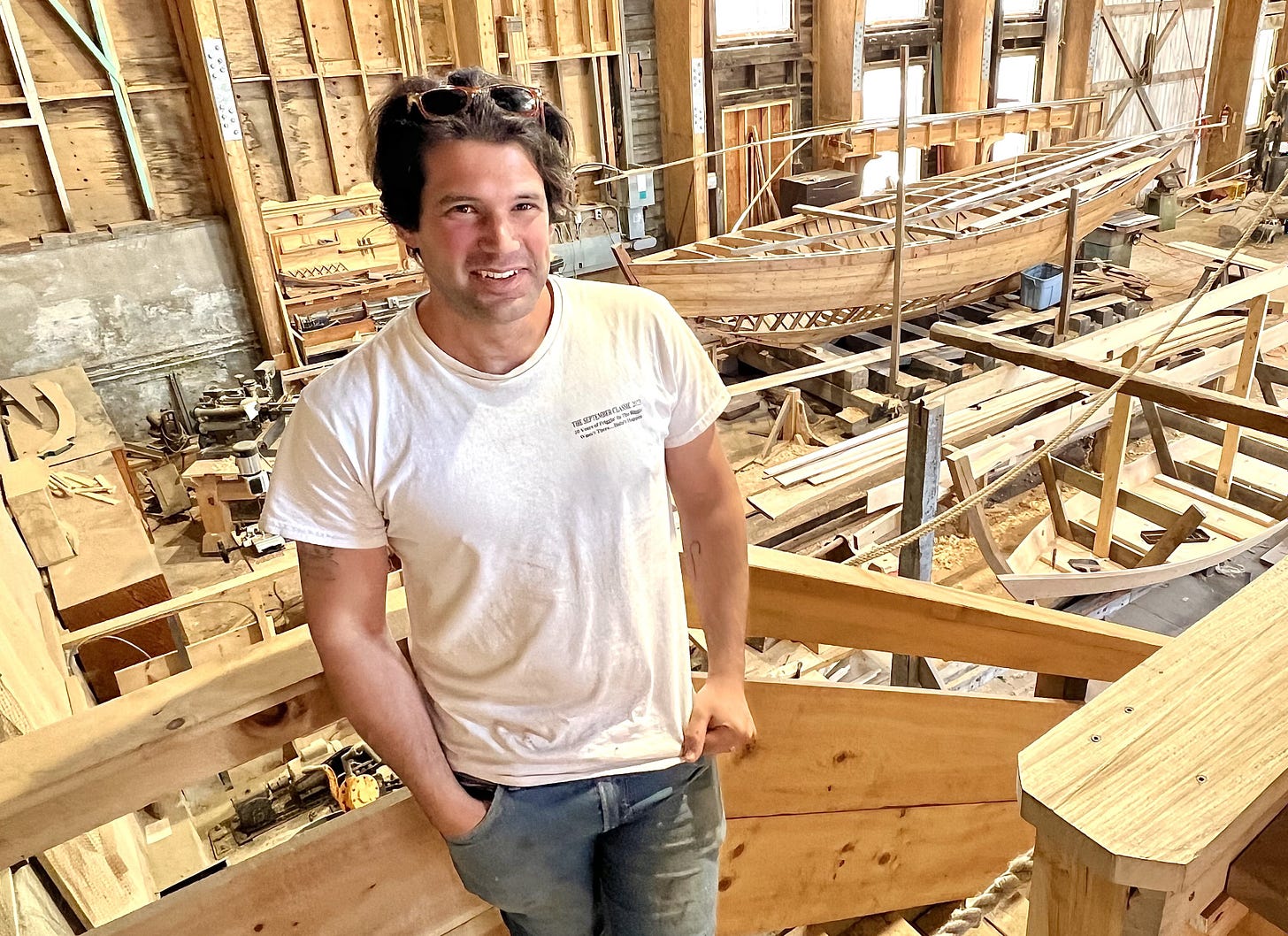
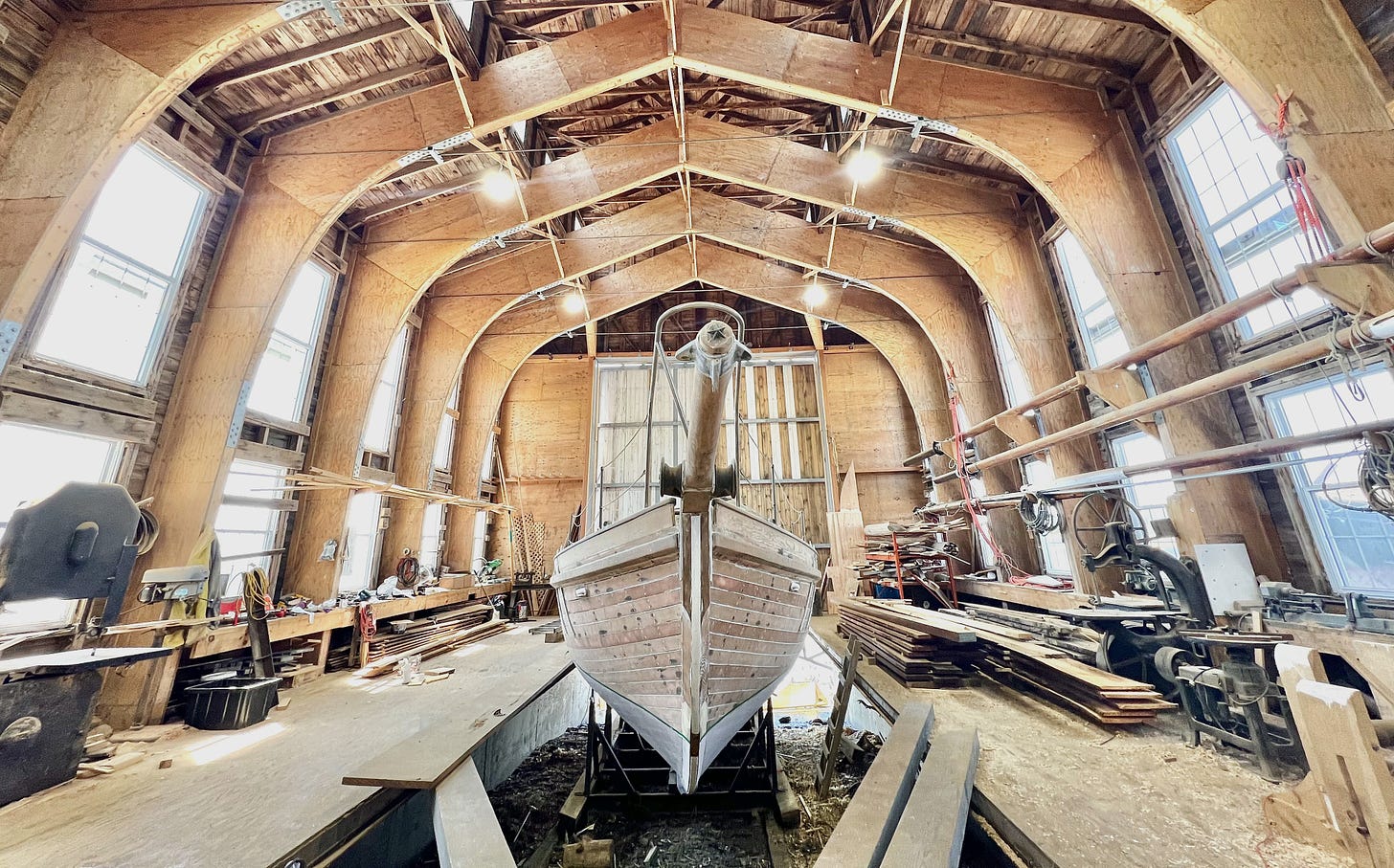
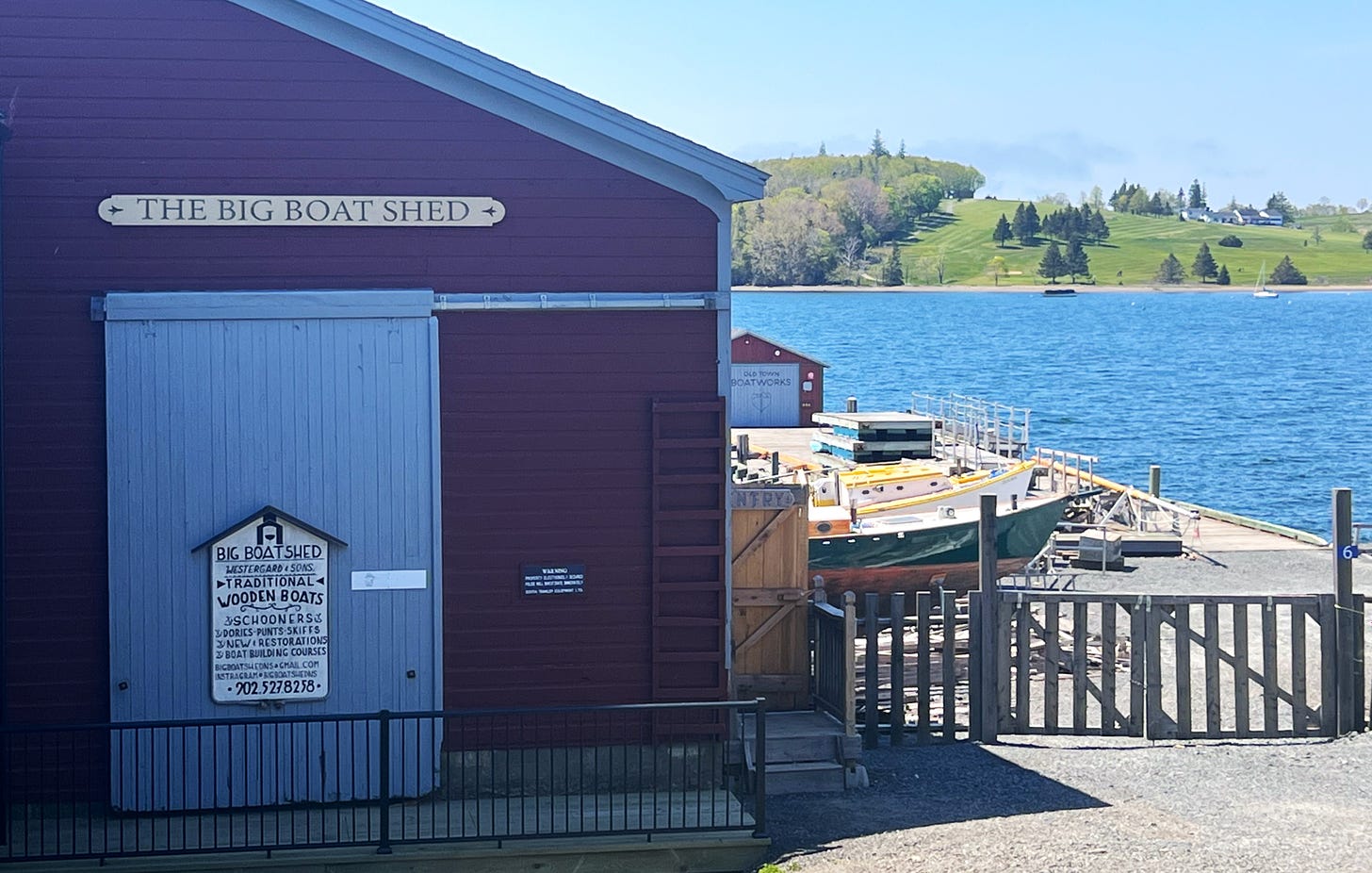
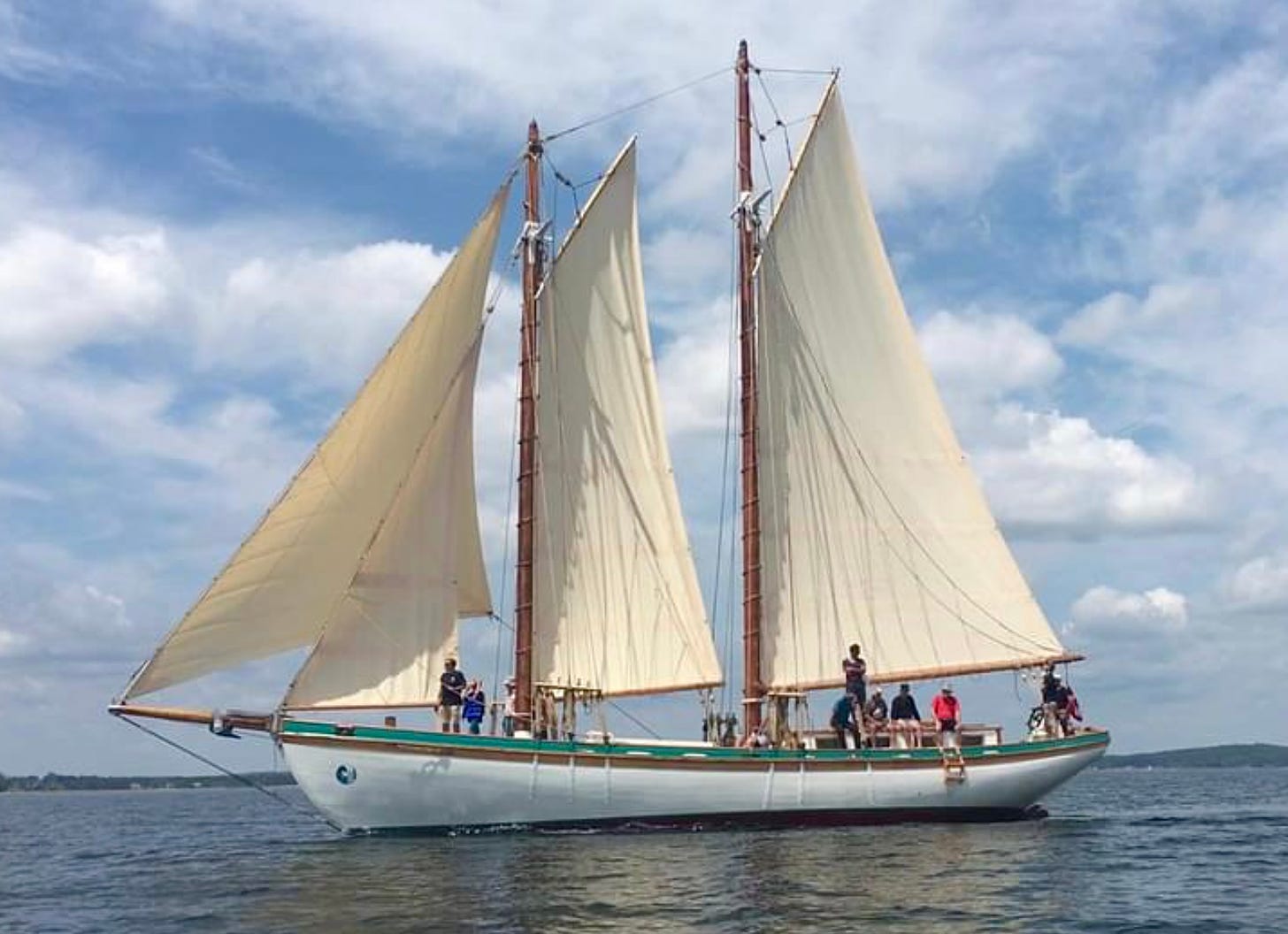
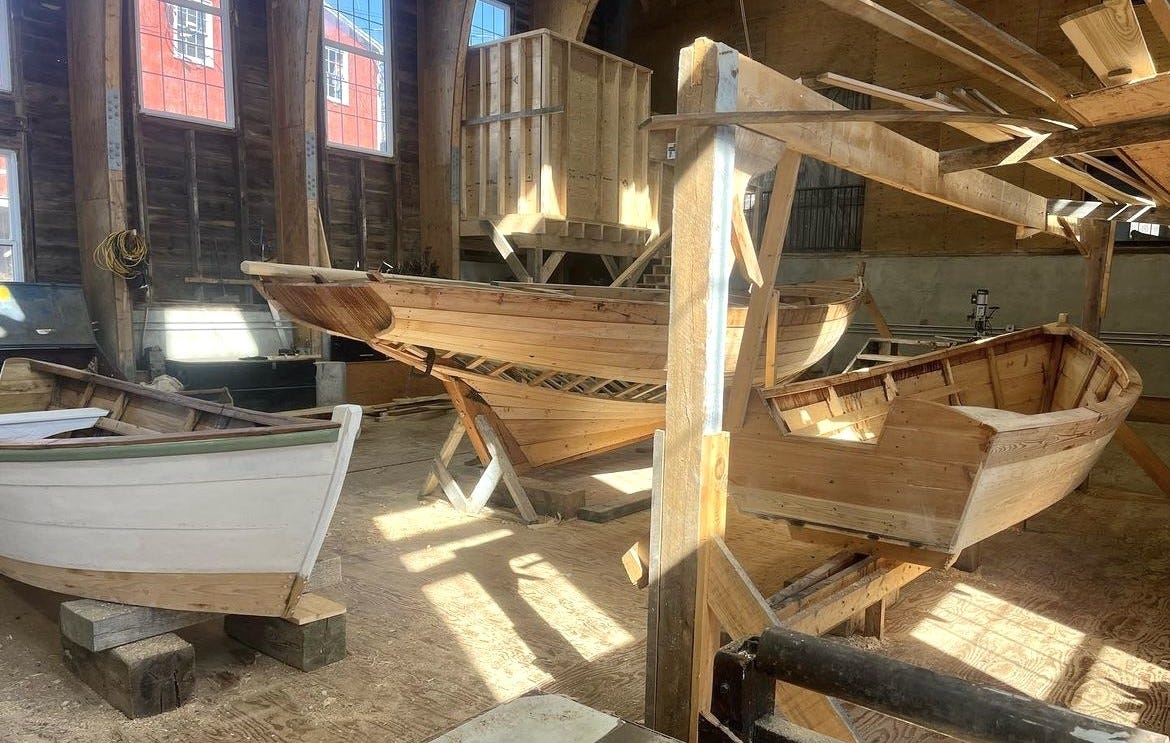

Thank you for this wonderful piece of writing, Sarah. You absolutely capture the quality of epiphany I experienced when first visiting the big Lunenburg boat sheds as a child - and relive whenever I have the privilege of sailing on an old wooden boat. I so appreciate you making this story available to all as I was able to share it with my friends at the NS Heritage Schooner Rescue Society. We envision a future where the legacy of Nova Scotia schooners and their pivotal role in the province is recognized and celebrated. You have just played a part in that!